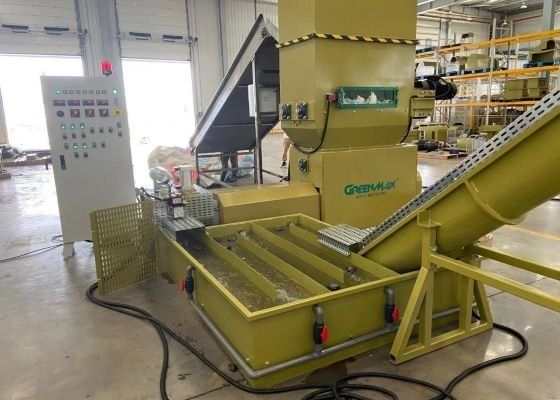The amount of EPS waste generated by the fishery is also quite large. It is one of the main sources of EPS waste no matter which country it is in. One of GREENMAX’s customers is engaged in fishery-related work in Tasmania, Australia. In the process, it will generate There are many waste EPS salmon boxes, and during the breeding process, a large number of EPS buoys are also needed in the ocean. However, since the use of ocean buoys is no longer allowed in this area in recent years, not only the terminal use of this item is required, but also Help recycle previously produced EPS buoys and EPS fish boxes.

After learning about the customer’s difficulties and demands, GREENAMX recommended that the customer use a hot melt machine combined with a water cooling system for recycling. Because EPS buoys have been salvaged from the sea a long time ago and left on the beach for a long time, these EPS wastes have a low water content and can be recycled using hot melt technology.
Using EPS densifier combined with water cooling system to recycle EPS is more efficient
EPS densifier has the highest compression ratio among all GREENMAX recycling equipment with compression function, which can reach 90:1. It is mainly used in conjunction with the water cooling system to improve the automation of recycling. The main purpose of the water cooling system is to remove the extruded, semi-melted state. The EPS foam is cut into small pieces and then falls into the sink. With the push of water flow, the EPS hot melt cools quickly and is sent to the collection device to realize automatic bagging. This also maximizes the automation of EPS recycling.

If you are also engaged in fishery-related industries and have EPS waste that needs to be recycled, you are welcome to contact GREENMAX at any time, and we will introduce you to the recycling process of EPS densifier in detail.